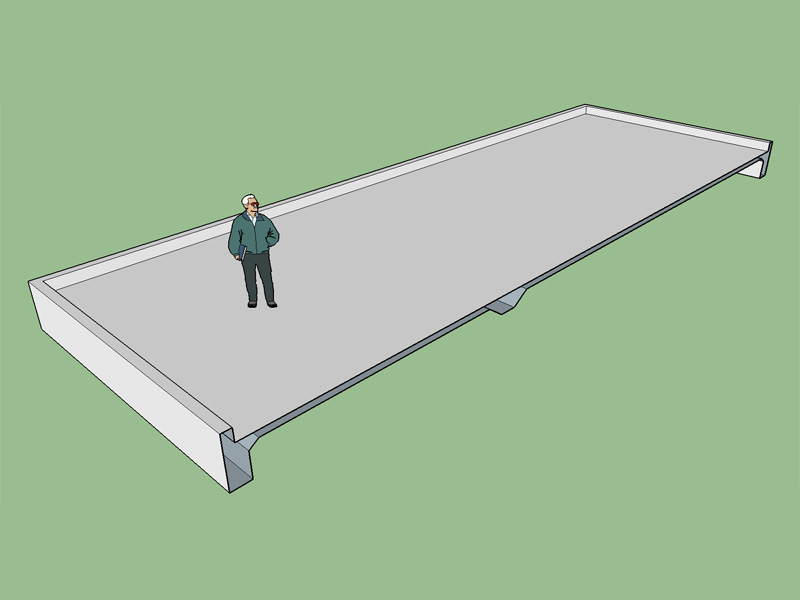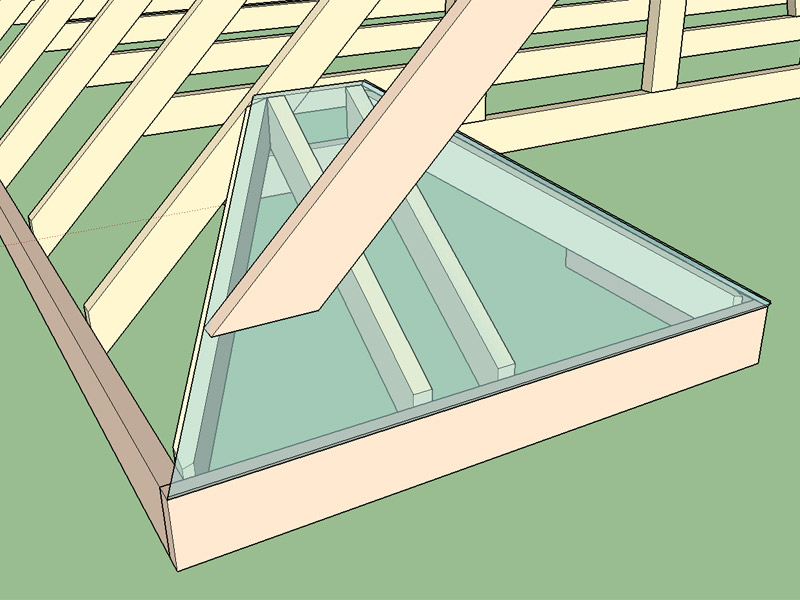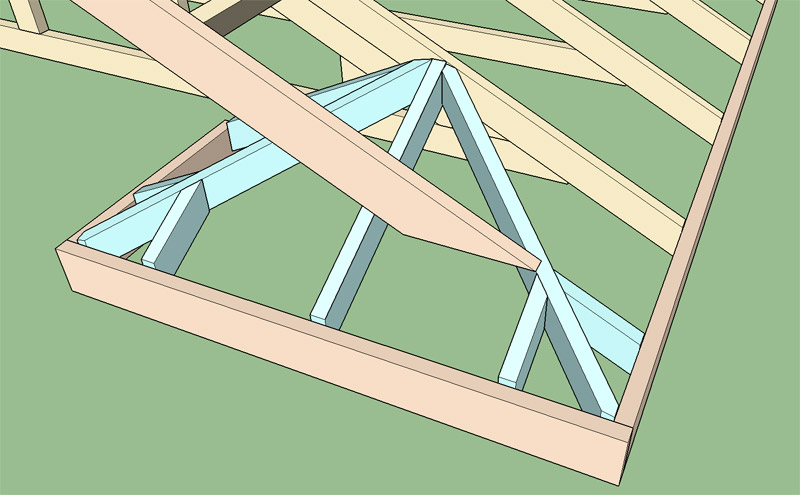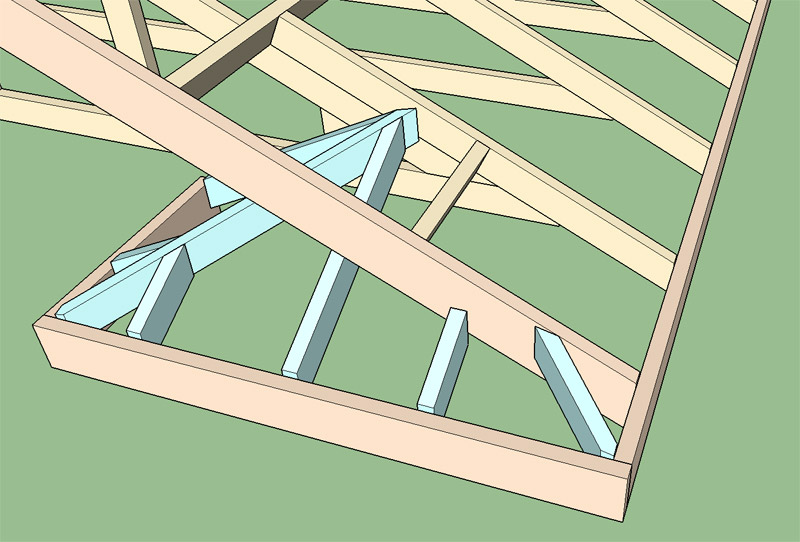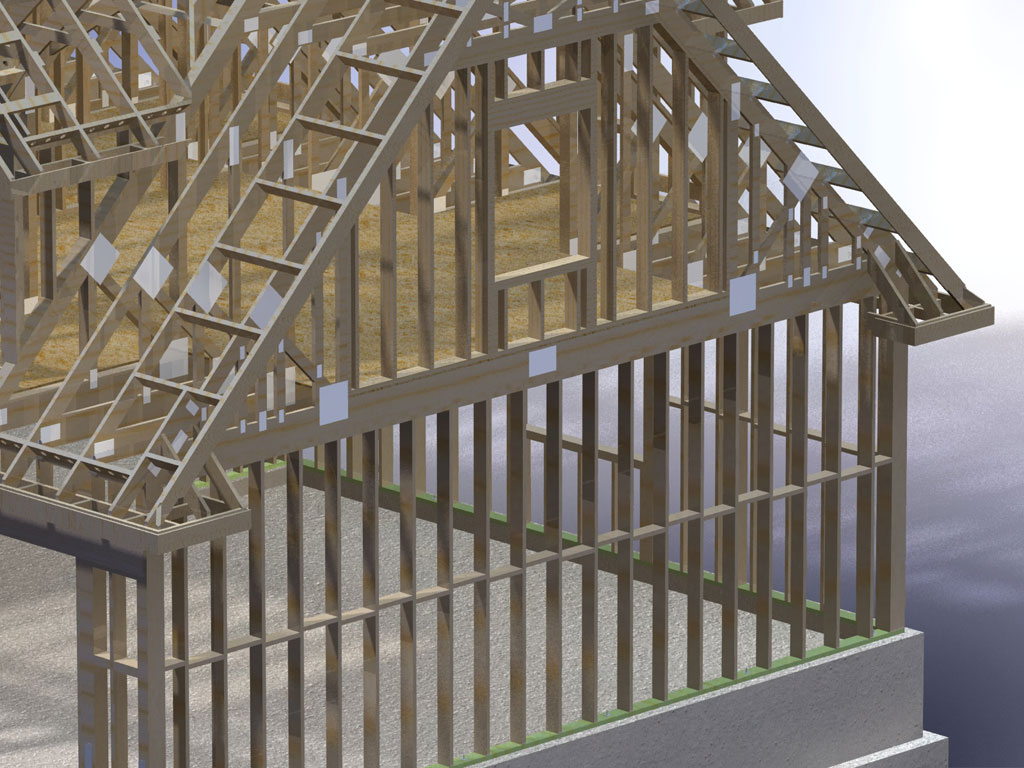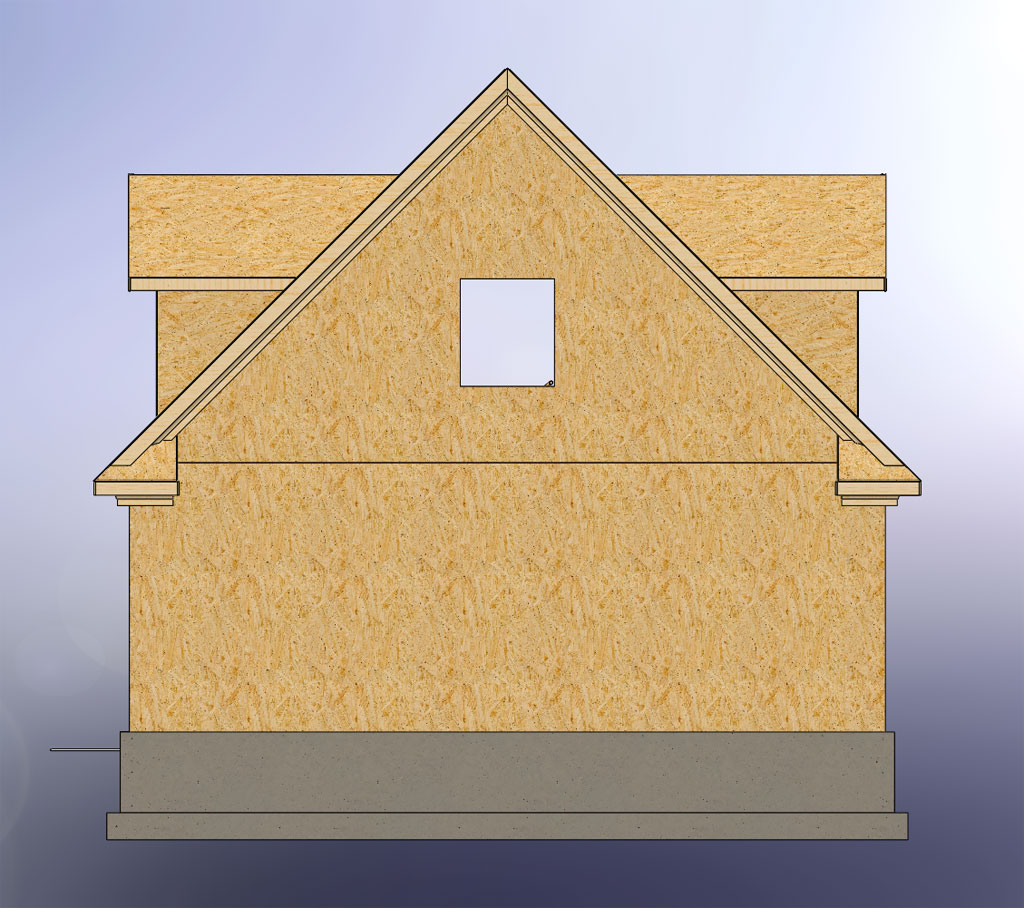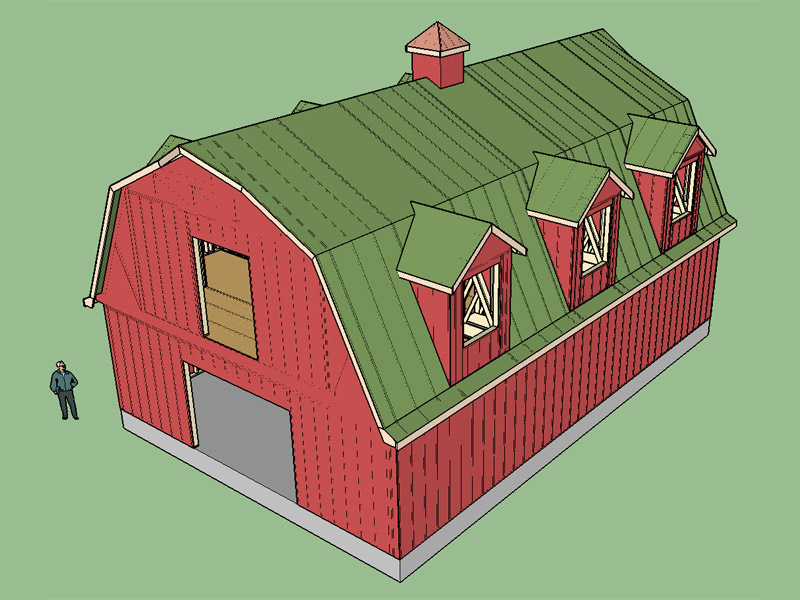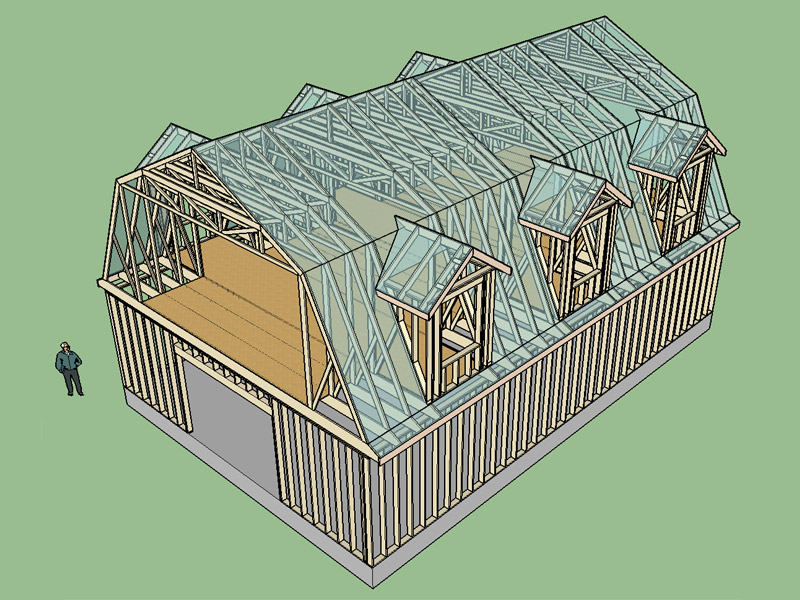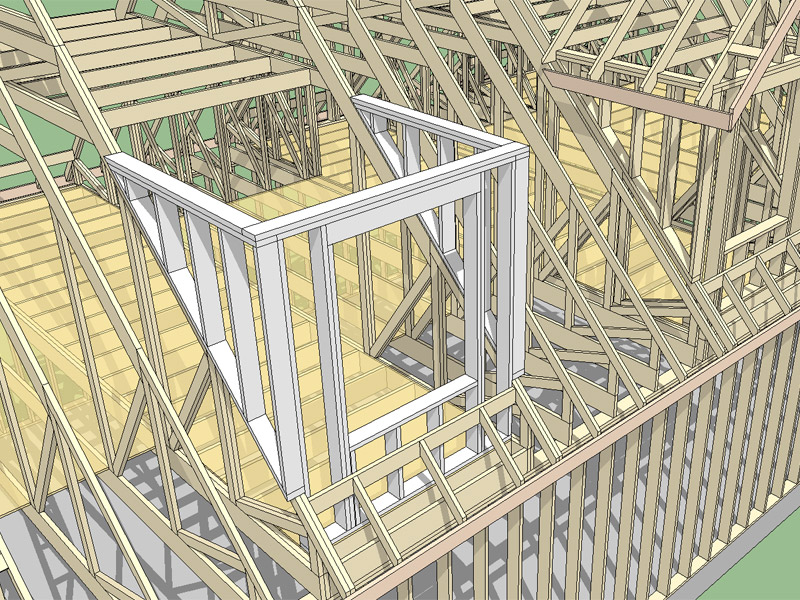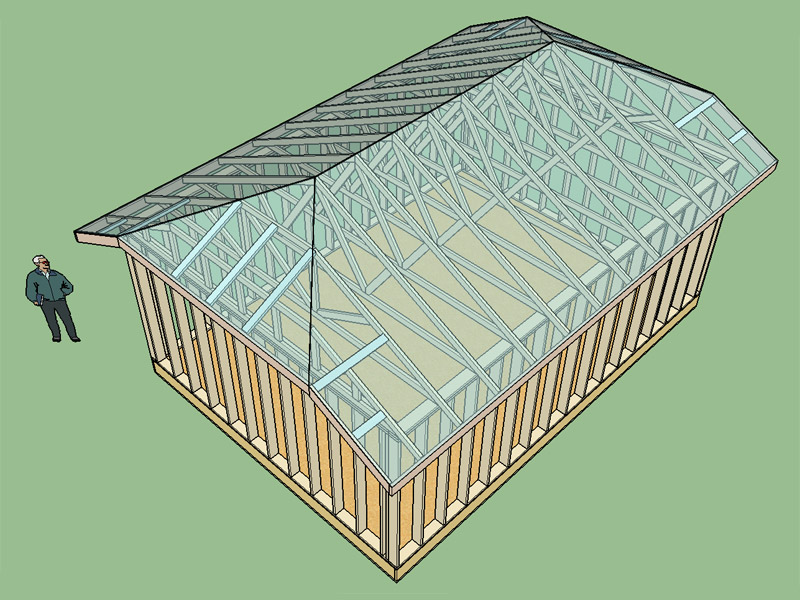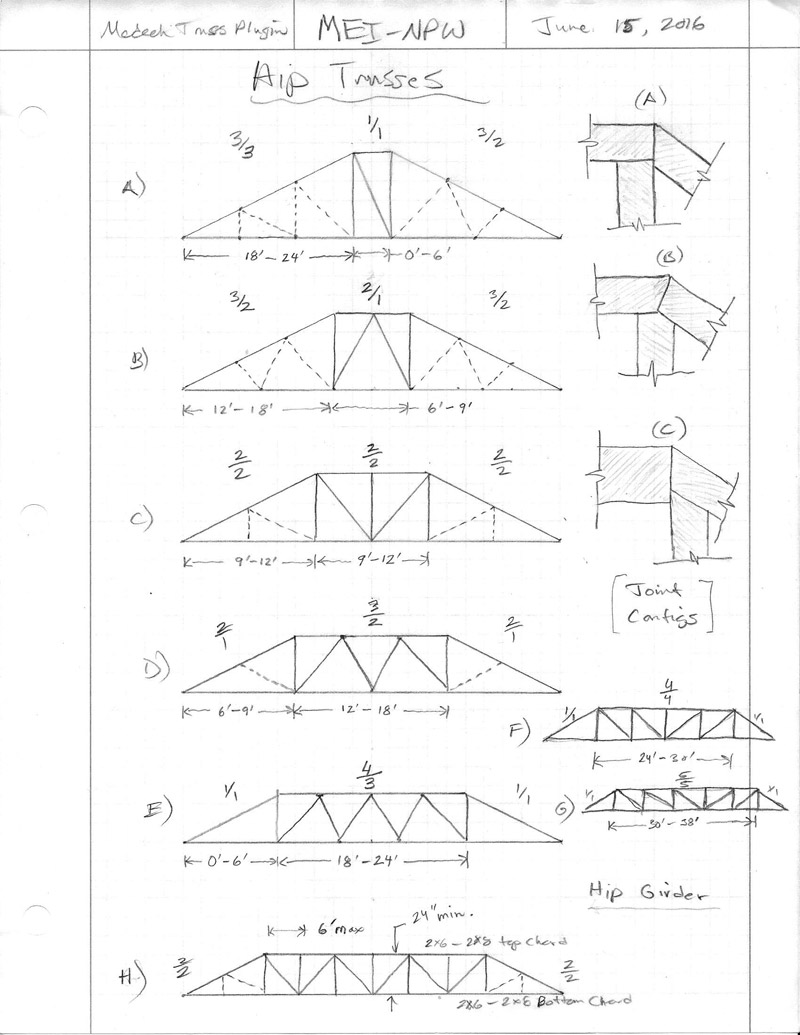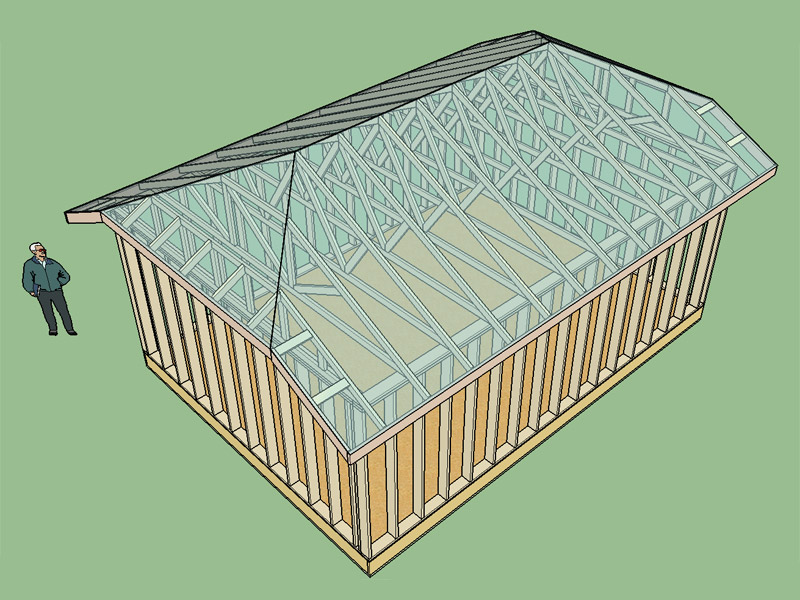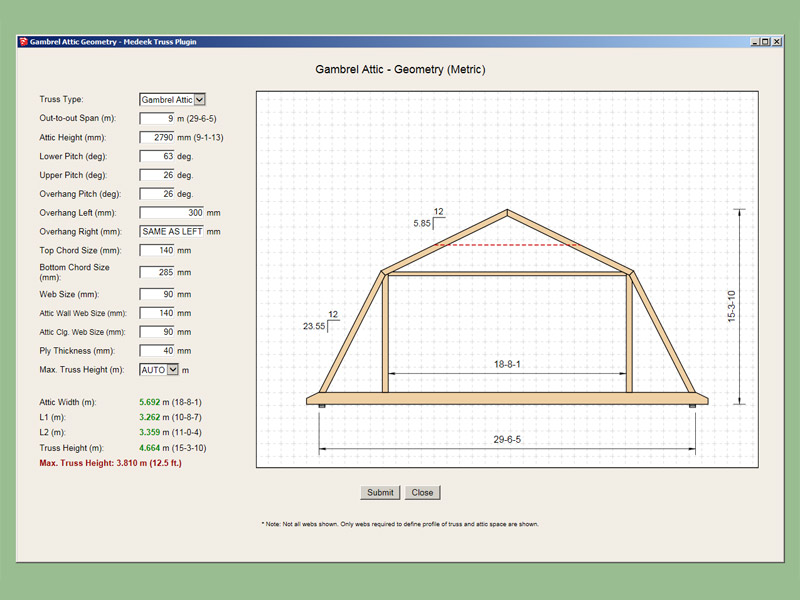My wife kindly pointed out that the interior footing might not extend the full width or length of the building, very good point. To correctly specify an interior footing you also need a start and end point, so five inputs total to define this feature:
Direction: X Dir or Y Dir
Footing Width:
Footing Depth:
Start: Measured from first selection point that defines foundation outline.
End: Measured from first selection point that defines foundation outline, must be greater than Start length.
An example of a partial width interior footing:
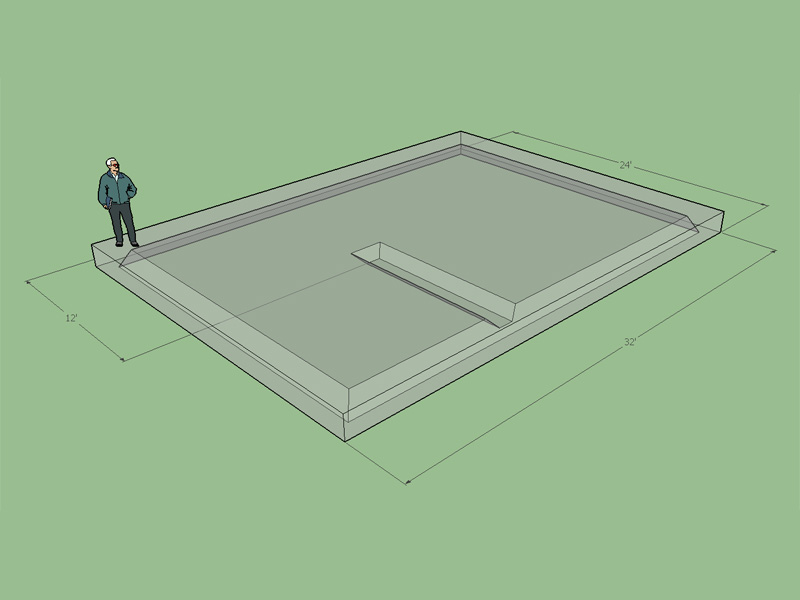
View model here:
https://3dwarehouse.sketchup.com/model.html?id=c6935965-9939-43cd-b682-ffaf67a8a1cd
The problem with the basic UI is that it only allows for one interior footing. If I webdialog this input menu I can show the layout of the foundation in plan view and allow for an unlimited number of interior footings as well as have footings running in both the X and Y direction. The possibilities are really endless.
The same methodology would apply for an arbitrary polygon shaped foundation.
Direction: X Dir or Y Dir
Footing Width:
Footing Depth:
Start: Measured from first selection point that defines foundation outline.
End: Measured from first selection point that defines foundation outline, must be greater than Start length.
An example of a partial width interior footing:

View model here:
https://3dwarehouse.sketchup.com/model.html?id=c6935965-9939-43cd-b682-ffaf67a8a1cd
The problem with the basic UI is that it only allows for one interior footing. If I webdialog this input menu I can show the layout of the foundation in plan view and allow for an unlimited number of interior footings as well as have footings running in both the X and Y direction. The possibilities are really endless.
The same methodology would apply for an arbitrary polygon shaped foundation.


